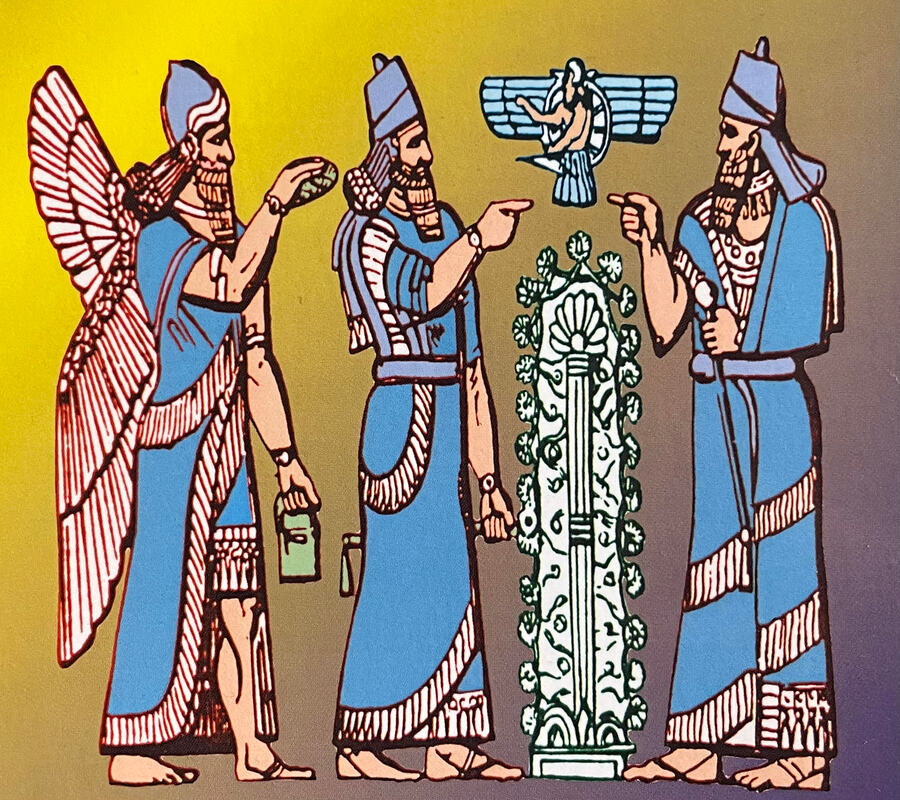|
Last week I found a copy of A. Smythe Palmer's "Babylonian Influence on the Bible and Popular Beliefs" in the newly reorganized wealth of our tiny library. (It recently suffered a few purges from having to move a few times in rapid succession - but a good library is always regenerating) The book was originally published in 1897, and retains its 1800-s style printing-plate layout, giving it a lot of personality. I remember reading a Rider Waite commentary book that was published in the same spirit. There is something I can't put into words about the typeface of that era that gives books like that a time travel feel.
The Babylonian story plays an interesting role as an apocryphal prelude to Genesis of the Bible. Smythe describes it as "the Detailed account given in the first of Genesis as not that of the original creation, but rather that of the recreation or reconstruction of a material world already existent, and already, for some unexplained reason, brought to confusion." elaborating that: "darkness is the product and witness of the first apostasy in the light-heaven of the first creation." While as the title suggests, the book focuses on the Babylonian beliefs, but the Babylonians themselves drew influence from the earlier sumerians. Tiamat of Babylon and Nammu of the Sumerians were both sea-goddesses. Tiamat was the embodiment of the dark, stormy, salt-water chaos of the Sea. Nammu, alternatively, was a nurturer, and mother of the gods. Tiamat, as the dark mother, births 11 monsters to oppress the younger gods in her own story. Inanna, another goddess of Sumeria, provided the ingredients for Tiamat's chaotic side, presiding over war, violence, love, and passion. She was even considered a goddess of procreation, but did not have a role as a "Mother Goddess" Per se. All of these can be compared to the the III of the Tarot, who personifies both the wild creative and destructive powers of nature. To me, this is all fantastic thunderstorms, spiky space dragons, tentacles of the deep ocean, verdant forests, etc. As time moves forward, the god Marduk rises in popularity with Hammurabi's rule, and the archetypes of light and chaos clash again. Marduk becomes the "slayer of Tiamat" and we leave the era of the goddess in many ways. The Babylonian "Ea" was the "water under the earth" that became the realm of Hades in Ancient Greece. Over time, the wet, cold chaos becomes an afterlife, and eventually, becomes the inferno in Christian mythology. Palmer points that as these natural aspects become personified and gods are consolidated into "God," we end up with Marduk becoming the Archangel Michael, and Tiamat becoming Satan. Civilizations rewrite the creation myth to suit their own time, the gods and their roles change as well. The ruins of chaos serving as a divine fossil layer. Taylor For more fun reading on Tiamat, there's a well-written entry in the World History Encyclopedia
0 Comments
Leave a Reply. |

 RSS Feed
RSS Feed
